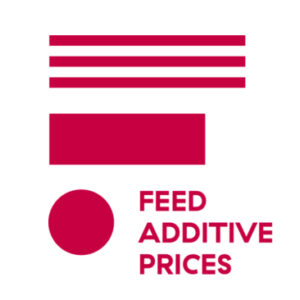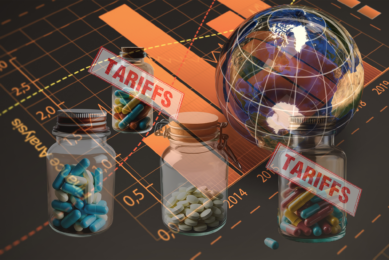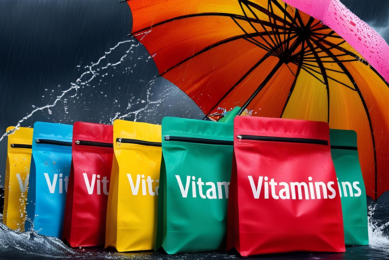Vitamin markets: Vitamin D3 500 continues to be very firm

Vitamin D3 500 still has the most active market and prices have increased significantly within a short period of time. There is said to be nearby shortage and suppliers either do not offer or ask 2-3 times higher prices compared to two weeks ago. Learn more in this week’s feed additives snapshot (week 28).
As there are also several long term contracts already in place, new demand is therefore limited and the question is how long this bullish market will last. Vitamin E suppliers continue to try to increase prices as well and to a certain extend that is working, although limited until now.
Vitamin A 1000 is stable at the moment, although buyers continue to keep a close eye on vitamin AD3, as vitamin D3 500 is firm. Mixed messages on vitamin B3. Some challenges are reported in terms of production output at a European supplier, this was said to trigger the market. But at the same time there are already long term contracts in place and overall it feels quiet.
Vitamin C suppliers are not all present as their plants are into summer maintenance or they have stopped offering in an attempt to create a firmer market. Some suppliers are in the market at higher prices than some weeks ago. Overall the market is calm. No significant activity is seen on other vitamins right now.
In partnership with Feed Additive Prices
Vitamin E 50%
The market sentiment is still slightly firm, although it does not translate yet into further price increases. A manufacturer in the EU indicated there could be some potential production challenges due to the bad weather and water floods in parts of Europe. Suppliers continue offering significantly higher prices in another attempt to increase the final market price. Buyers remain conservative. and they had already contracted their vitamin E forward recently, or even some time ago already. Q3 is mostly contracted and a portion of Q4 is as well.
Vitamin A 1000
Recently a manufacturer in the EU indicated they may face some production challenges due to the bad weather and water floods in parts of Europe. But so far no impact on the market is seen. As vitamin D3 500 is increasing rapidly, buyers do keep an eye on vitamin AD3 as that is firmer as well now and may eventually have an effect on vitamin A 1000 too. Some market participants indicate that stocks are low, material is delayed and container freight is weighing on the price. But so far the price has been stable lately and buyers are not reacting really. A good portion of Q3 is contracted by now and a small overlap into Q4 as well.

Vitamin D3 500
Although the first shock of the suddenly very firm market is gone, it is still quite volatile and prices are much higher compared to several weeks ago. There was already a strong desire by suppliers to increase prices, but now price offers have indeed been much firmer, and higher prices are being paid. Stock levels in the different regions are said to be very low and incoming material is significantly delayed. Most suppliers indicate that they are sold out or offer much higher prices compared to last week. The market has heated up a lot and does not show any signs of cooling down soon. There are many older long-term contracts already in Q4, so in theory, there is no need to buy material. But as the pipeline is disrupted, several buyers return to the market to take in buffer stock and are willing, for now, to pay a high price. A good portion of Q3 is contracted already, some overlap into Q4.
Vitamin B2 80%
No changes seen or reported compared to previous weeks. Recently the market price in Europe increased a bit due to poorer availability at local EU suppliers. But that situation seems to have stabilised at that slightly higher price level. In other regions, the prices are mostly stable, although there is a continuous desire for manufacturers to increase prices. But demand is not supportive enough. A good portion of Q3 is already contracted for mostly strategic reasons.
D-Calpan
Despite the higher container costs, the end price of d-calpan in the regions is not moving really. The market feels stable at a low price level in most regions at the moment as supply in general is ample and suppliers are keen to maintain market share and move stock. Already a good cover ahead is taken into Q3 for strategic reasons.
Vitamin B3
Some production challenges were recently indicated by a European manufacturer, but until now no significant impact has been seen yet. Other than that, a stable market and no significant changes seen and/or expected, compared to previous weeks. Higher container freight costs do not have a big impact on the final product price in this case. Demand is still said to be sluggish, therefore a significant price increase in the short term is not very likely. There is cover taken well into Q3 and in some cases even further at a time when prices were lower compared to today.
Biotin
No changes are seen in the biotin market at the moment. Supply is ample and long-term contracts have been concluded and/or pending. Prices remain historically low. A good portion of Q3 is contracted and in some cases, buyers took long-term contracts well into late 2024.
Vitamin C 35% mono
Suppliers are undergoing summer plant maintenance and at the same time have stopped offering for new business. The suppliers that are offering, all indicate higher prices compared to previous months. The market is pretty well contracted though, so no significant price increases seen, other than the container freight rate increase impact. Q3 and partially Q4 are mostly contracted based on lower-priced old contracts.











